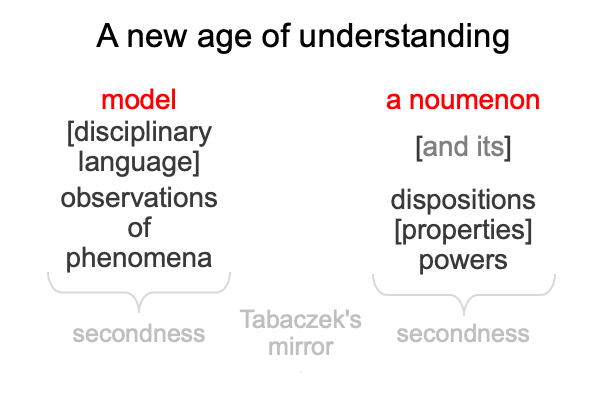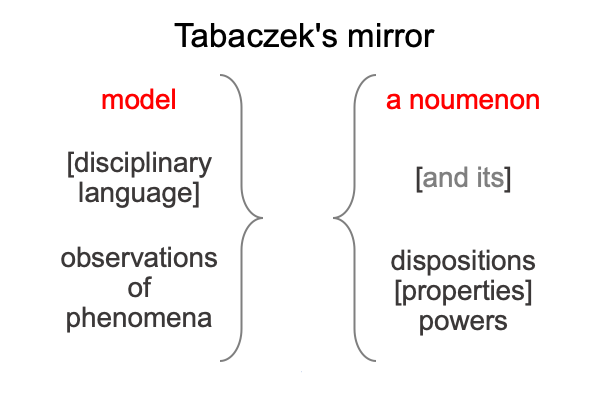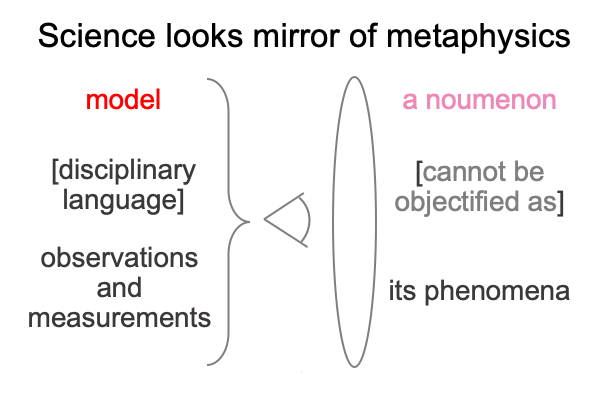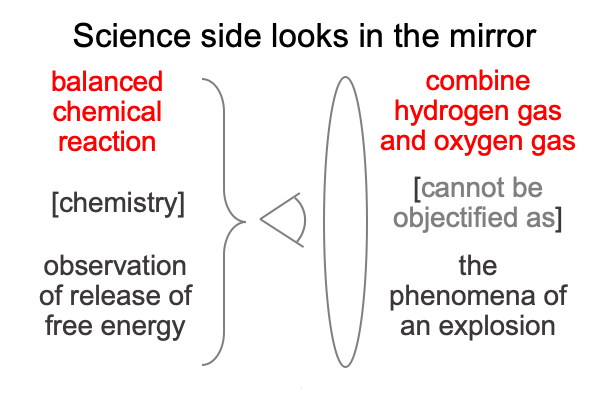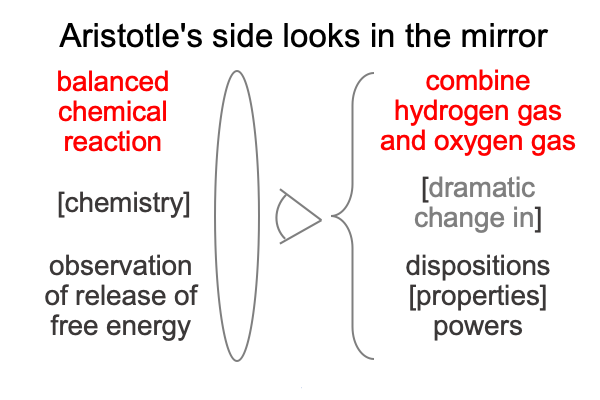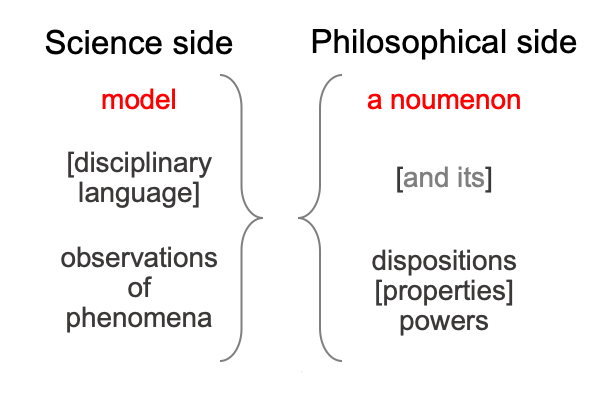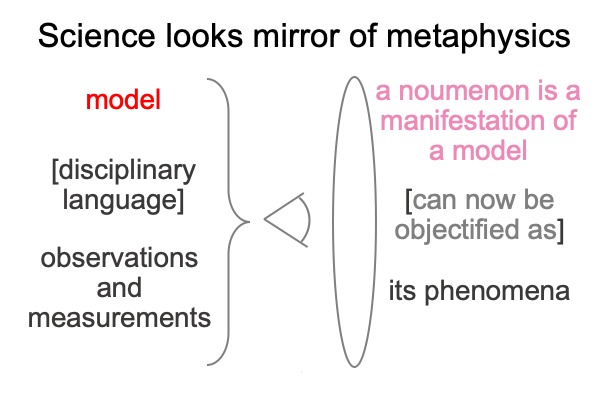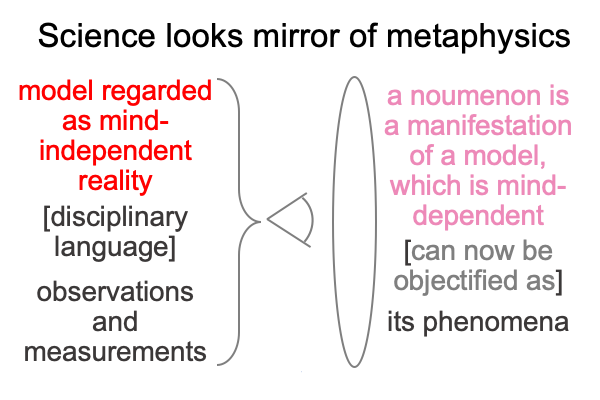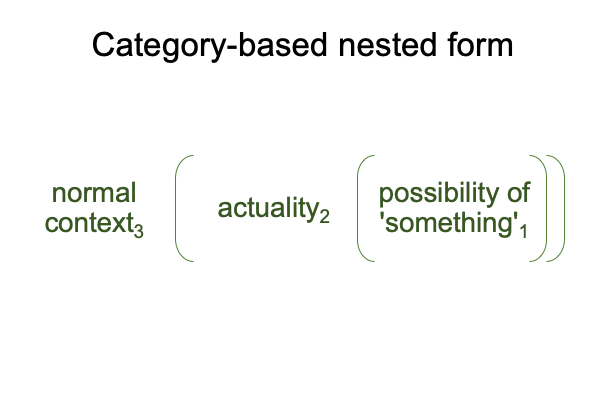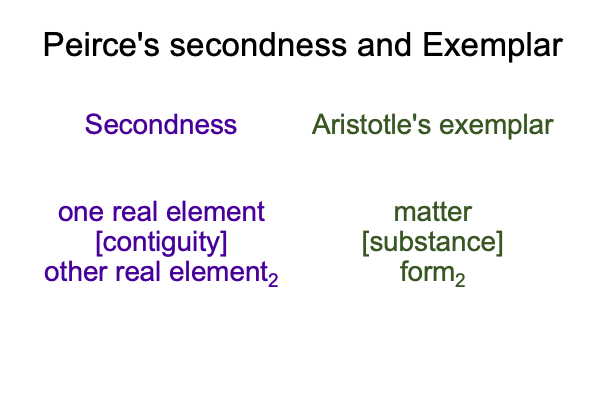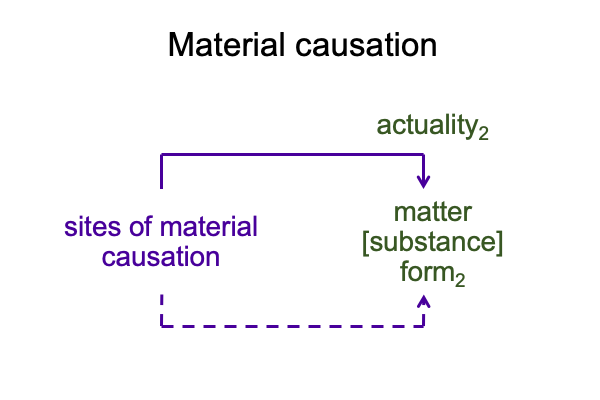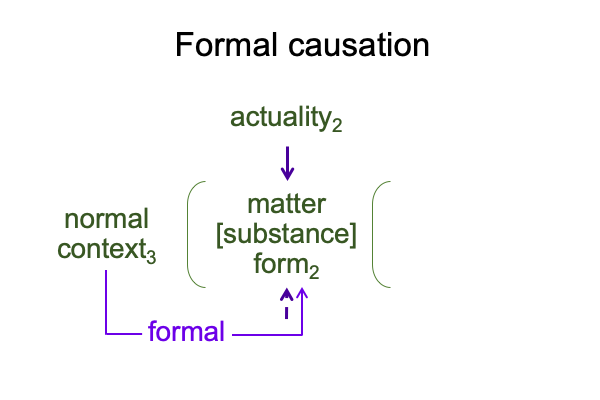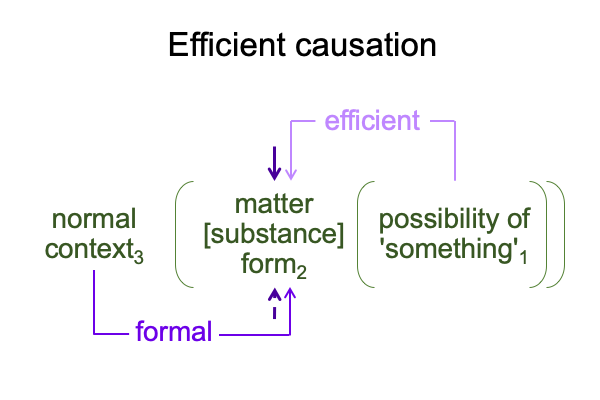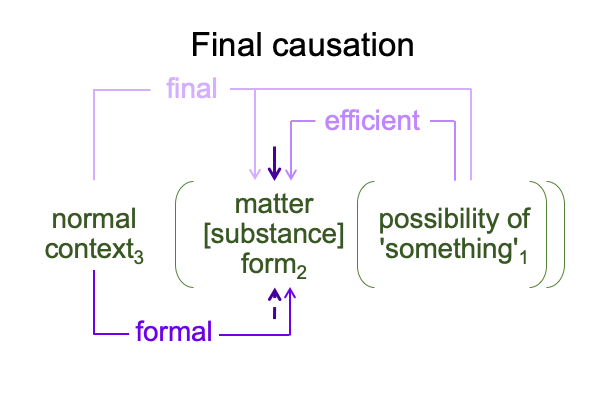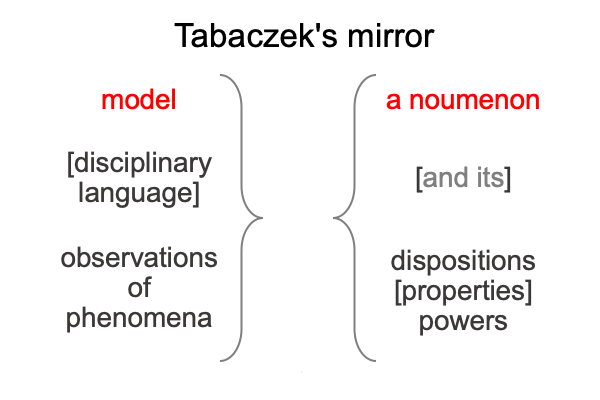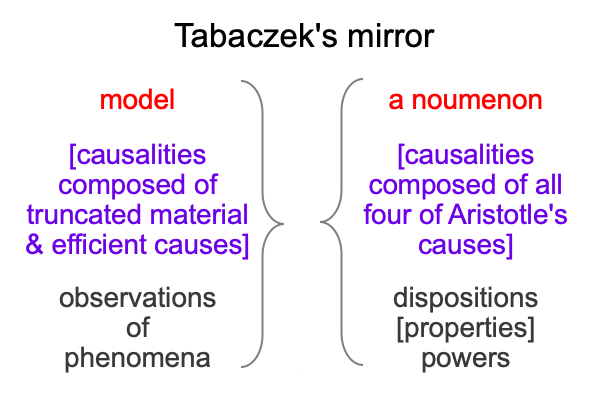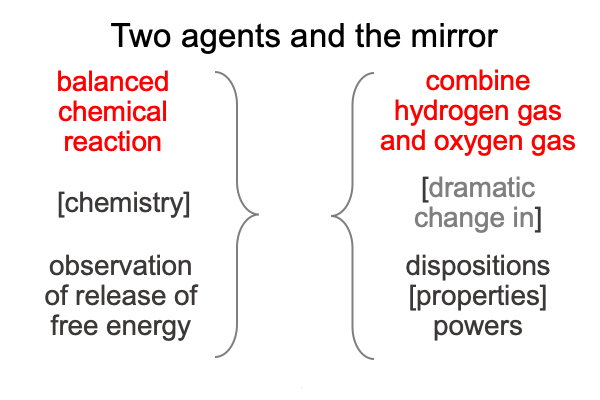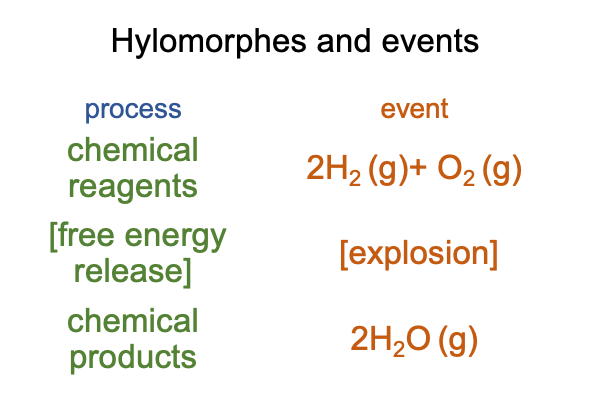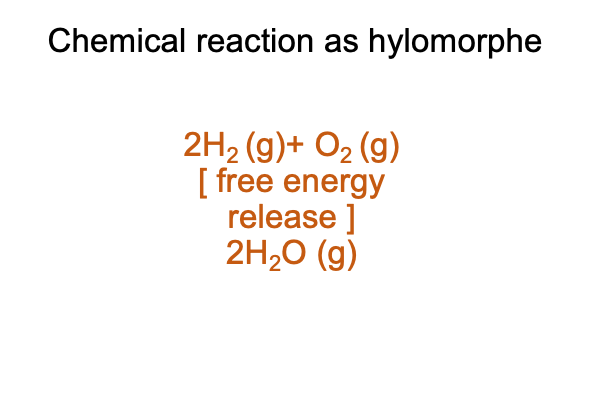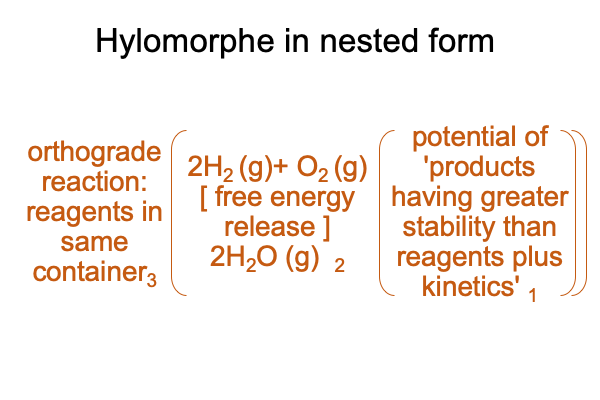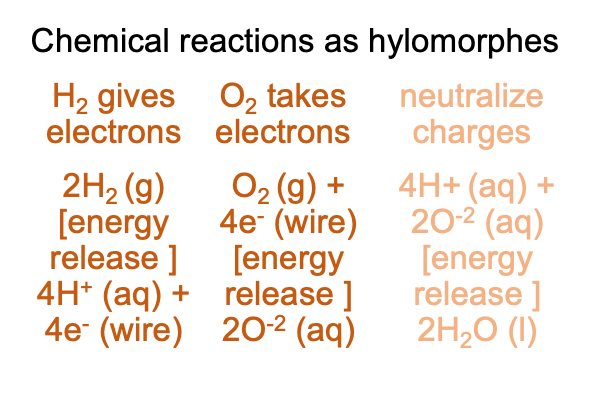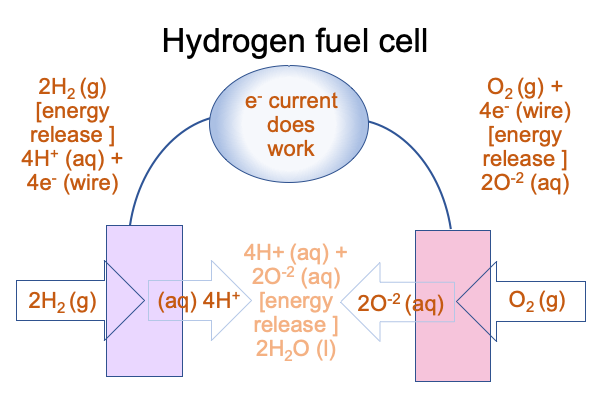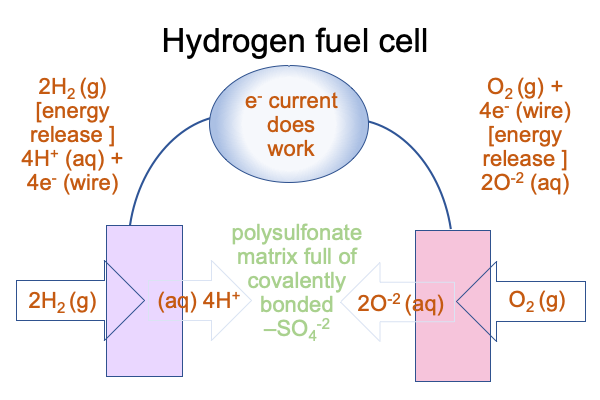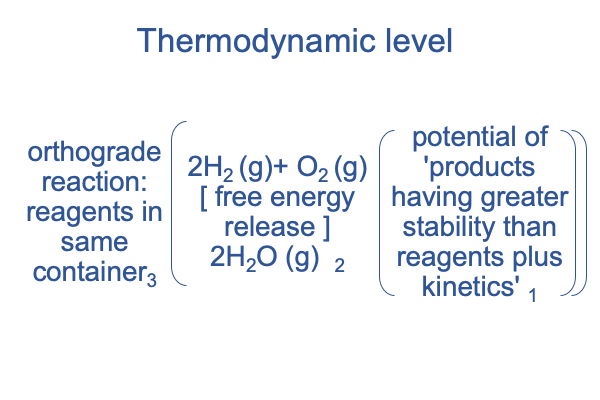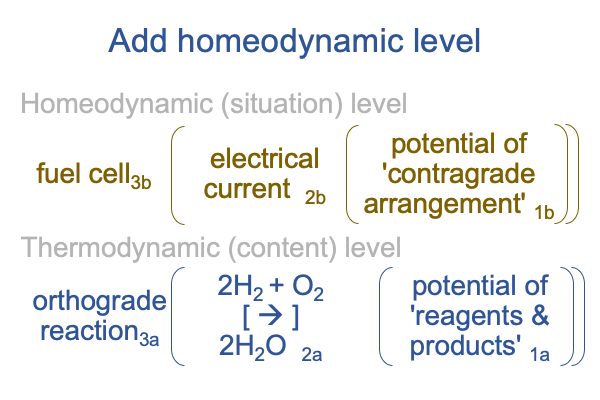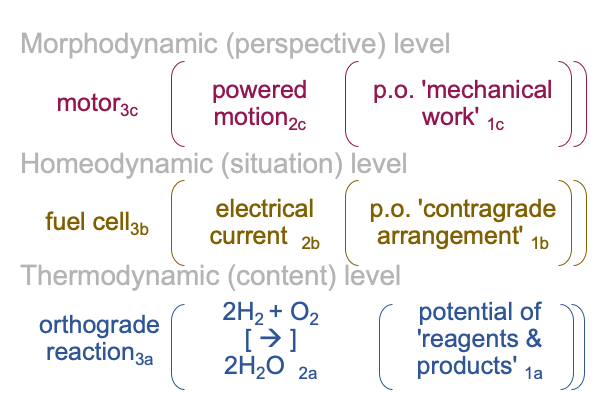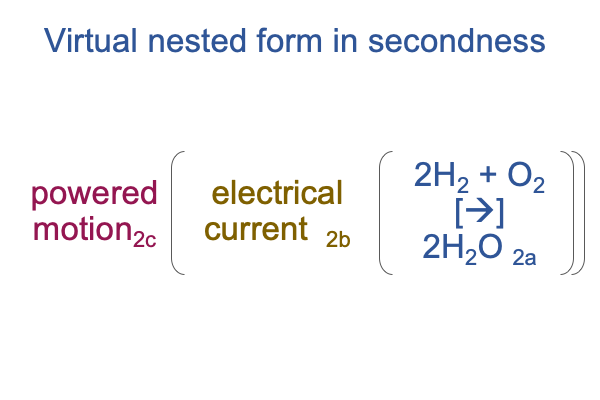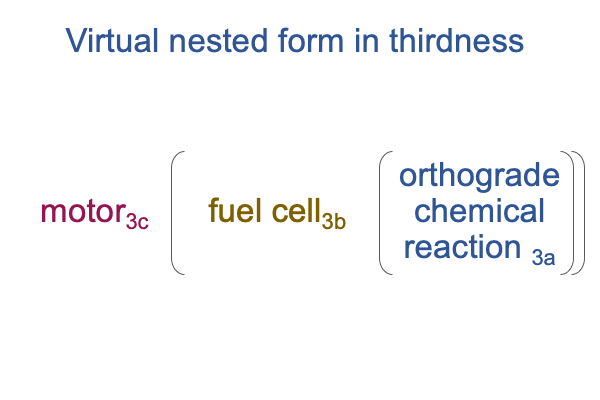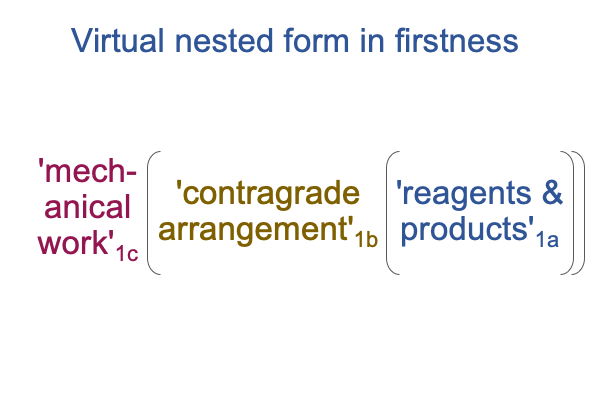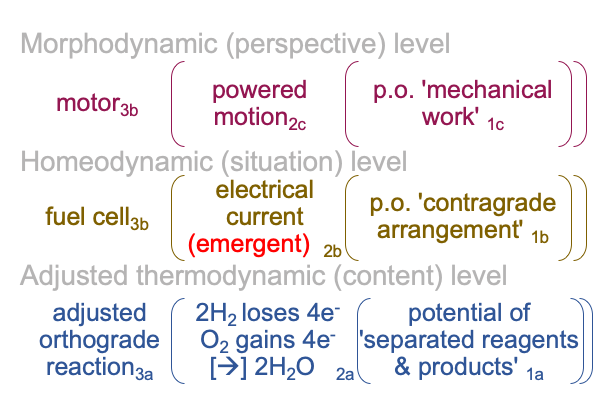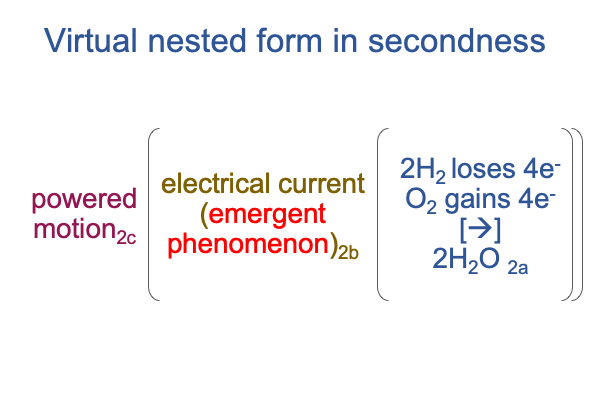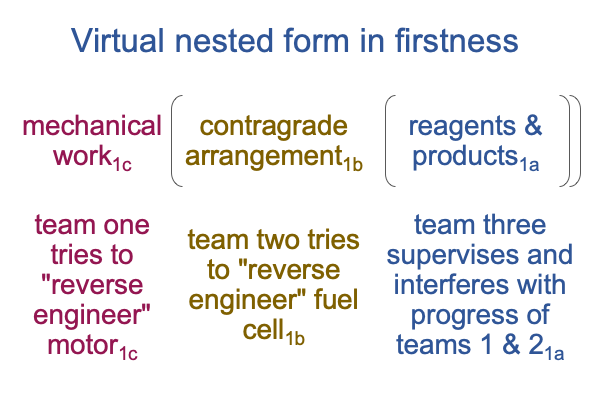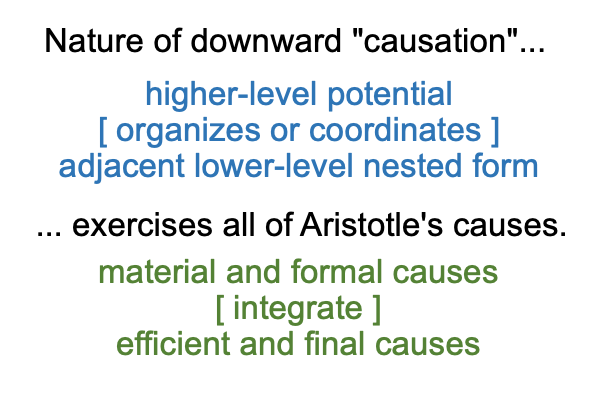Looking at Mariusz Tabaczek’s Book (2019) “Emergence” (Part 5 of 22)
0033 Aristotle’s hylomorphe of matter [substance] form applies to things and events themselves, not to their phenomena. As such, Aristotle’s hylomorphe may be regarded as the first abstraction that the natural philosopher makes when regarding natural things and events.
Framed as an exemplar of Peirce’s category of secondness, the hylomorphe takes the general structure of two contiguous real elements, depicted as one real element [contiguity] second real element. In the process, the hylomorphe may apply to a noumenon, as Aristotle’s exemplar, or it may appear in different guises when applied to its phenomena.
0034 Here is an example. Hydrogen gas is produced in the electrolysis of water. So is oxygen gas. These may be collected separately. Let me start from there.
Hydrogen and oxygen are in separate containers. Each manifests as a gas. So, one can say that its substance is [manifests as]. That is how it is experienced by the scientist.
Despite their separation, hydrogen gas will tend to lose two electrons and become two hydrogen ions. That is its disposition. Another way to say this? Hydrogen gas has the power to reduce another chemical by giving its electrons away. Tabaczek uses the terms, “dispositions” and “powers”, interchangeably. The terms are subtly different and the scientist may muddle that distinction in confusing ways, to the chagrin of their students. The hylomorphe in the following table assists in this regard.
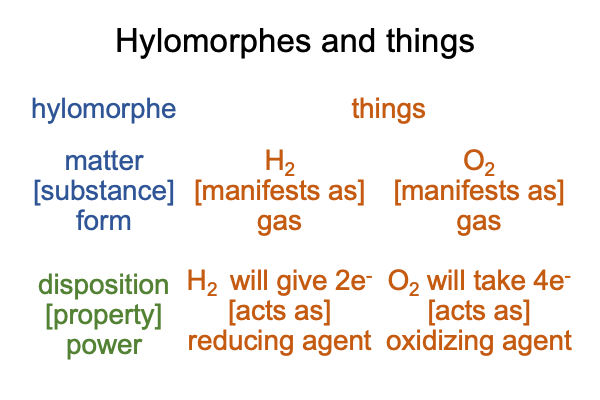
0035 What does that imply?
A “property” consists of two ways of saying the same thing.
Just kidding.
0036 The advantage of Peirce’s secondness becomes evident in descriptions of scientific events, such as chemical reactions. When the isolated hydrogen gas is combined with the isolated oxygen gas in the same container. A spark will ignite an explosion.
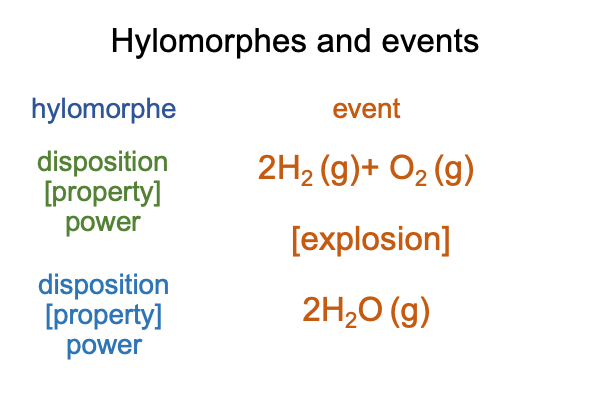
The properties of hydrogen and oxygen gases are very different from the properties of water.
0037 Oh, let me display that reaction again.
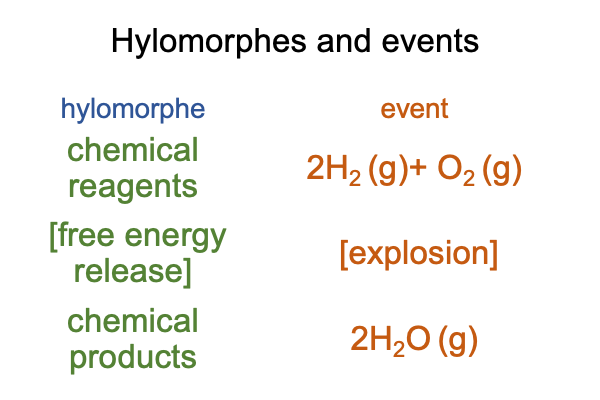
0038 Technically, this spontaneous reaction may be labeled, “orthograde”. Orthograde processes tend to occur spontaneously, especially when there are no barriers to kinetics (such as holding the chemical reagents in different containers). The term, “kinetics”, typically refers to the speed of a chemical reaction. The model of a balanced chemical reaction does not take the speed of reaction into account at all. All that matters is that free energy is released during the reaction for the reaction to spontaneously occur. Since hydrogen gas and oxygen gas are very reactive, the free energy release is labeled, “an explosion”. Wow!
0039 Now, I can take what I have learned about hylomorphes and apply it to the two hylomorphes in Tabaczek’s unwitting reconfiguration of the Positivist’s judgment, where (dare I say?) the positivist intellect loses its definition and dies, but may remain as a ghost in the mirror.
The hylomorphe on the left is what remains of the empirio-schematic judgment.
The hylomorphe on the right is what the metaphysical analyst encounters: the thing itself and its dispositions [properties] powers.
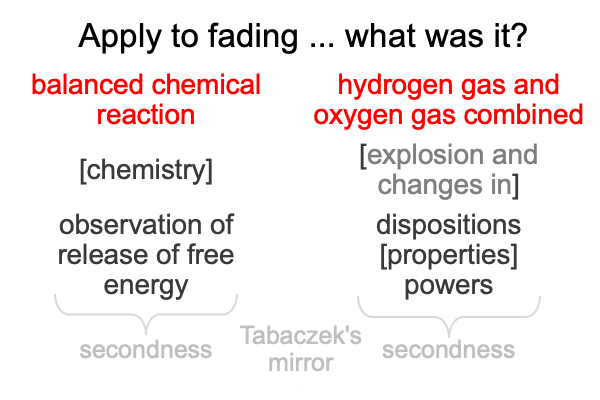
0040 The hylomorphe on the left is the empirio-schematic or “scientific” side.
The hylomorphe on the right is the noumenal or “metaphysical” side.
In this way, Tabaczek introduces a new age of understanding. The positivist intellect is dead. Long live Tabaczek’s mirror.
